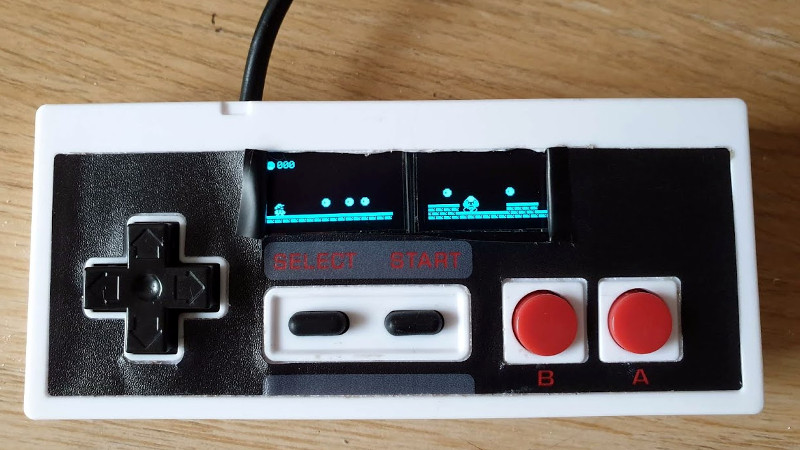We’ve become used to seeing retro games running on commodity microcontrollers where once they would have required the bleeding-edge console hardware of their day. [Duncan]’s Mario clone takes the genre a little further, using not a processor with plenty of pins for peripherals, but instead the humble ATtiny85. Its eight pins drive two OLED displays, and accept input from the buttons of a cheap Nintendo-like controller.
The write-up is split between software and hardware sections, with all the software itself available from a GitHub repository. He’s bit-banging the i2C for the displays for an impressive turn of speed, and the ATtiny’s lack of pins is addressed by clever use of resistive dividers to present a different voltage for each button pressed. With a truth table of voltages he’s even able to detect multiple simultaneous button presses. Music is achieved with the chip’s limited resources by storing the sounds in EEPROM, and clocked it at 16 MHz for smooth gameplay.
The whole is mounted inside the shell of the controller, with its USB guts removed and replaced by a smart custom PCB. An unexpected problem with ground plane fill caused a temporary roadblock reading the buttons, but the finished product is a very Nintendo-like experience. We like it.
















There is clever resource optimization and then there is just wrong/stupid component selection.
Thanks for being today’s inevitable sour-souled know-it-all commenter on a hackaday article for this article.
And those who can’t do the former, hate. This is an awesome project.
and there are times when some things are better left unsaid…..
To quote the write-up: “Sometimes self-imposed constraints can be fun, so I came up with some loose rules for this project”. For an actual product, I would agree. But maybe people find it fun to push their skills/creativity by imposing otherwise impractical restraints.
Even with the tiny display it is still bigger than the Bittboy lol.
Fun read :)
Please enlighten the rest of us by sharing YOUR ATTiny85 project that manages to push the chip further beyond its expected limitations and simultaneously spark more joy than this ingenious combination of hardware and software hackery!
Very impressive. Well done!